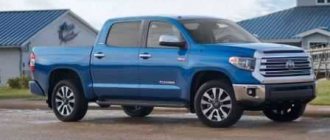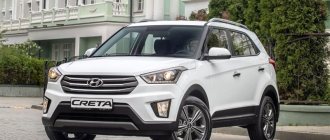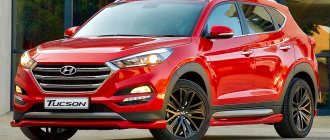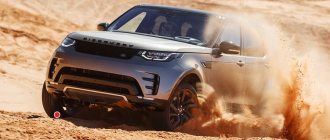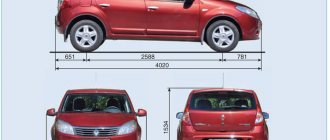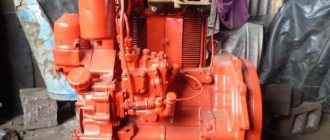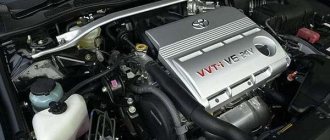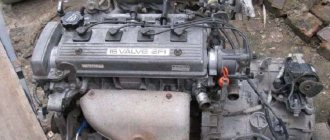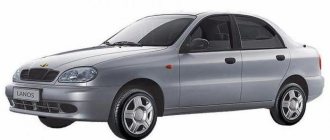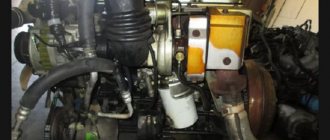When did the Toyota Sequoia appear?
Toyota Sequoia was originally created for driving in Canada and the cold states of the USA. Then it gained popularity in Mexico, Russia and the Middle East.
The Sequoia is one of the largest utility vehicles in the world. The first generation went on sale in 2000 and immediately supplanted the “oldies” in the market 4Runner and Land Cruiser.
The first generation of Sequoias had a durable frame body. The best design solutions at that time were implemented in the car. For example, the front suspension is like the Prado 120, the rear suspension is like the Land Cruiser 100, dual-zone climate control.
In 2008, the second generation came out. The powerful Sequoia is often compared to the Tundra, and for good reason.
When developing this generation, Japanese engineers took the Tundra's body and engine as a basis.
Only the rear part has undergone significant alterations; other differences are less noticeable. Even more: both cars are produced on the same assembly lines at Princeton.
In 2021, Toyota made a slight restyling of the model. The alteration was not large-scale and affected only the shape of the main and fog lights, radiator grille, and cruise control.
In 2021, the Japanese corporation expanded the Sequoia model range with the TRD Pro military modification.
Take care of the redwoods!
The redwood tree is a lumberjack's nightmare. The tree can grow up to 115 meters and be up to 8 meters in diameter. Nevertheless, the tree is listed in the Red Book, it is protected and cherished. Our Toyota Sequoia has not yet been included in any book since its birth and has not been particularly tall either. The car is assembled only for the American market on the basis of the excellent Toyota Tundra pickup truck. Compared to the base model, the SUV has a shorter wheelbase.
It would seem, why limit a car in size; in the States, the bigger the better. But the fact is that Toyota does not want to lose a buyer who has settled on Lexus. That is why, in order to remain in the same market segment as the Lexus LX 570 and Land Cruiser, the company cut the base of the SUV, but prepared three rich trim levels - SR5, Limited and Platinum. As a result, the Toyota Sequoia, whose technical characteristics are similar to the Tundra, has formed a new subclass in the American market, greedy for large and comfortable SUVs.
Dimensions of Toyota Sequoia
When listing the characteristics of the Toyota Sequoia, it is definitely worth mentioning the corrosion-resistant galvanized metal of the car body. The length of the giant SUV is impressive - 5.2 meters, width - 2.03 meters, height - 1.89 meters. In size, the Toyota Sequoia exceeds its direct competitor in Russia - the Land Cruiser. The latter is shorter by 25 cm and narrower by 8 cm.
In different modifications, the weight of the Toyota Sequoia can be from 2583 to 2722 kg.
The car is equipped with all-wheel drive, has an independent rear suspension and a high ground clearance of 24.4-26.9 cm.
Distinctive features of the appearance of the Toyota Sequoia
The first generation of the car was, in its essence and appearance, a stern, gloomy work jeep for long trips with the whole family. A kind of house on wheels or a truck for transporting a yacht or boat.
One interesting moment from the history of the car. For the first tests, the engineers did not make a unique body for the Sequoia, but took the cabin from the Tundra and the rear part from the Land Cruiser 100. As it turned out, the excessive similarity with the Cruiser became the main external disadvantage of the first Sequoias.
The characteristics of the second generation Toyota Sequoia can be easily assessed from photos or videos. The car began to look more modern, more aggressive. The shape has become more streamlined, “muscles have grown.” Despite the increase in size, the car looks more compact than its predecessor.
The SUV received a front bumper with an air intake around the perimeter, a massive radiator grille, bi-xenon running lights, wide side steps, roof rails, LED taillights, and well-placed chrome accents.
Characteristics of Toyota Sequoia
Description of the Toyota Sequoia car
The Toyota Sequoia SUV is an intermediate link between the Toyota 4Runner and Toyota Land Cruiser models. The car was so successful that it was named one of the best cars of 2001.
Many parts for the Sequoia were borrowed from the Toyota Tundra. However, the braking system has been significantly improved and a multi-link suspension has been installed. The model has a 4-speed manual or 5-speed automatic transmission.
In 2008, the Toyota Sequoia was slightly improved. The changes mainly affected the appearance of the car.
The debut show of the Toyota Sequoia all-terrain vehicle took place in 2000. The development of this model was carried out in conditions when the automaker did not have the opportunity to release a large number of new products and modernized versions of cars onto the market, which is why all the best developments available at that time were introduced into this car. The result is a vehicle that is far superior to its direct competitors in its technical characteristics, appearance, configuration, and interior equipment. This is confirmed by the fact that the model was awarded the “Best US Car” award in 2001.
The appearance of the SUV is formed from massive, slightly rounded lines. In the nose, attention is drawn to the large, chrome-plated, protruding radiator grille, from which high stamping ribs extend. The wide front bumper protrudes forward a significant distance, the wheel arches are noticeably enlarged, and straight stamping lines are made on the side surfaces of the body. The roof is standardly equipped with roof rails with a spoiler, and the convex tailgate has stylish branded attributes. The cabin of the SUV can accommodate seven people, each of them is provided with a personal seat provided with advanced, comprehensive support, a wide range of adjustments, ventilation and heating. The interior design is formed from straight lines, the elements of the front panel are highlighted with metal inserts, the instrument panel scales are placed in individual shafts and have different sizes, which gives the panel an original, individual look.
Exterior
The wide rectangular Toyota radiator grille is enclosed in a frame made of chromed metal, decorated with horizontal wavy blinds, behind which a mesh with medium-sized cells is stretched; a wide strip of stamping extends onto the surface of the Sequoia hood from the radiator to the windshield pillars. The main light blocks are shaped like an inverted trapezoid; they combine the main lights, daytime lighting elements, turn signals, and side lights. In the center of the large bumper there is a rectangular air intake niche; on either side of it there is a pair of smaller niches in which the fog light cylinders are placed.
A metal step with a corrugated rubberized surface is suspended under the thresholds; a stamping strip is made above the thresholds. In addition, low stamping edges extend between the wheel arches and under the chrome door handles. The roof has stiffening ribs along the edges of the roof and roof rails are installed. A wide spoiler with a brake light repeater is mounted on the rear, large rear lights repeat the appearance of the front light, a decorative strip made of polished metal is applied to the slightly rounded tailgate, and a license plate niche is located under it. The rear bumper has a U-shaped cutout that reduces the height of the trunk; round side lights are built into the sides of the bumper. Body dimensions are 5210/2029/1895 mm, ground clearance - 251 mm, turning circle - 11.6 m. Wheelbase - 3099 mm, trunk volume - 785 liters, curb weight - 1650 kg.
Interior
The interior of Toyota is decorated with materials in contrasting shades, and these shades may not be black and white, but can be combined in numerous color options; the surface of the Sequoia seats is covered with light natural leather, and the seats have a comfortable popliteal cushion. An adjustable lumbar support is built into the backs of the seats, cup holders are formed in the decorative trim of the wheel arches protruding into the cabin, and there are also cup holders in the door niches. The second row seats can be rotated 180 degrees or folded to floor level, the third row seats can also be transformed, and a massive container with air duct grilles and climate control intensity controls is installed in the center of the cabin.
The driver's side console contains a gear knob, a parking brake handle, cup holders, and a joystick that allows you to navigate through the information system menu. The front part of the front panel is conventionally divided into three zones. There is a concentrated scale of the instrument panel in the left zone, a glove compartment in the right, and a wide console occupies the center of the front panel. It is equipped with air deflector grilles, an information system display, on-board system controls, car audio controls and keys, and climate control mode switches. In addition, large buttons for activating service systems are distributed to the right and left of the steering column; compact joysticks are placed on the steering wheel spokes, using which you can control the navigator maps and interact with the cruise control functions.
Specifications
In the basic configuration, a 3608 cubic centimeter engine is installed under the hood of the Toyota Sequoia SUV. It develops up to 339 Nm of torque, power up to 310 horsepower, automatic transmission with 6 ranges, drive is transmitted to the rear wheels. In the top configuration, the car is equipped with a permanent drive; an engine with a displacement of 5690 cubic centimeters is installed under the hood, its torque is 545 Nm, power is 381 hp. forces, acceleration time - 6.7 seconds.
Car interior: description and photo
In 3 words about the interior of the Toyota Sequoia - laconic, strict, spacious.
All first-generation interiors are distinguished by their luxurious design, which in some places is inappropriate for such a car.
But at the same time, all the buttons on the dashboard, steering wheel, and automatic transmission lever are ergonomic, providing easy and convenient control.
The driver's seat is electrically adjustable.
In the second generation, the interior began to look stricter, simpler, but soundly and reliably. The dashboard elements are large, you don’t need to look closely. Due to the impressive size of the central console, the designers even had to divide the panel into 2 parts.
The salon is equipped with 10 airbags and three-zone climate control. Music lovers will appreciate the 14-speaker JBL audio system, and families with children will appreciate the ceiling-mounted TV. Luggage compartment ventilation has appeared.
Disadvantages of interior design include the type of materials on the dashboard.
Plastic inserts in combination with leather do not look very out of place inside such a solid car.
The need for 19 cup holders for 8 passengers is also questionable.
“Heart” of the model
Well, this story about technical characteristics should start with the engine. Toyota Sequoia has an excellent power unit. He has proven himself very well. And this is TOYOTA 4.5 turbo. It turned out to be very economical and powerful. Today the car is equipped with a powerful 5.7-liter V8 engine. Its full name is 5.7 DOHC 32 i-FORCE V8 VVT-i. Even people who do not understand cars can understand that the engine is solid. That's right - it produces 381 horsepower.
According to numerous sources, there is a version with a 4.7-liter diesel power unit. However, these models are still not available. Perhaps they will be released. Or is it just in plans. But in any case, such models would be popular (due to the current economic and fuel crisis).
Specifications
Characteristics of the first generation Toyota Sequoia: petrol 4.7 liter “eight” with 243 or 273 hp. Attached to a 4- or 5-speed gearbox. The car was supplied in a rear-wheel drive or all-wheel drive version, which had a reduction gear and could be connected to the front.
The technical characteristics of the second generation Toyota Sequoia are amazing: a powerful V8 gasoline engine with a capacity of 4.6 or 5.7 liters with an output of 310 or 381 horsepower. It is connected to a 5- or 6-speed automatic transmission paired with intelligent all-wheel drive.
Sequoia accelerates to 100 km/h in just 7 seconds. The main disadvantage of the “Japanese” is gluttony. In city mode, it consumes 16-25 liters.
Line of motors
In the base, the car is equipped with two V8 engines - 4.7 and 5.7 liters. In a rich way, I must say. The engine power is 276 and 371 horsepower, and the most powerful of them is shared by the Sequoia with the hard-working Tundra. If you just think for a second about how much power there is in this SUV, it is not at all surprising that this behemoth behaves on the highway like a sports hatch. Of course, a huge all-wheel drive frame SUV accelerates to hundreds in just 6.7 seconds.
The car's dynamics are better than the sports version of the Range Rover Sport Supercharged, and in this discipline the Toyota Sequoia can compete with the Mercedes GL450. In fact, it turned out that dealing with this colossus is quite simple. It is not at all heavy-duty in handling and the roots of a pickup truck are not felt at all. Especially in the rear, because a pickup truck's rear suspension would be too stiff for a premium rogue. Therefore, the designers went to create a completely new independent rear axle suspension.
Who is the Toyota Sequoia suitable for?
The Sequoia is a great body-on-frame SUV. If the driver needs a real jeep, and not a low-power SUV, then the choice is obvious. Its price is lower than that of its closest analogue - Land Cruiser. The SUV is suitable for long long trips or off-road travel, as well as for 1-2 day outings - fishing, picnics. The impressive dimensions of the Toyota Sequoia make it not the best car for the narrow streets of a modern metropolis.
But off-road is different from off-road. The sequoia will easily pass where roads become directions, make its way through half-meter virgin snow without any problems, and pull another car out of a skid. But, here's the irony, the weight of the Toyota Sequoia makes it vulnerable to swamps and swamps.
